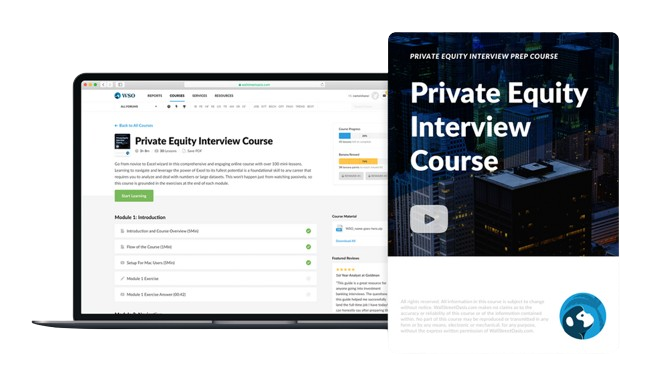Unitranche Debt
A hybrid loan structure, combining both senior and subordinated debt in a single loan
What is Unitranche Debt?
Unitranche debt is a hybrid loan structure, combining both senior and subordinated debt in a single loan.
The borrower of Unitranche debt pays a blended interest rate, combining elements of senior and subordinated debt, creating a single, hybrid interest rate.
This allows the borrower to secure financing from a single lender or a group of lenders, simplifying the borrowing process. With this, the borrower gains access to a more significant amount of capital in a single transaction, which helps to accelerate purchases in a buyout.
Unitranche loans first emerged in the United States around 2005 and gradually gained popularity as a financing option, including in the European leveraged loan market over subsequent years.
Key Takeaways
- Unitranche debt is a hybrid loan structure that combines senior and subordinated debt in a single facility.
- Borrowers pay a blended interest rate, simplifying the borrowing process by obtaining financing from a single lender or a group.
- Unitranche debts may have distinct tranches, such as senior or bifurcated tranches with varying priority levels in case of default. Debt issuers collaborate with underwriters to determine repayment conditions, interest payments, and seniority.
Understanding unitranche debt
A borrower's key concern is usually the repayment schedule. The level of risk, for example, will vary significantly in unitranche loan arrangements. This means lenders might assign varying priority levels in the event of a default.
A unitranche loan may be divided into distinct tranches, each with its own characteristics. Borrowers should know that there are two unitranche loans:
- Senior: A senior stretch loan with five to six turns of leverage, which characterizes the borrower's debt-to-EBITDA leverage ratio, is the first type of loan
- Bifurcated: Bifurcated loans slice the loan into two distinct tranches: 'first-out' and 'last-out' tranches. The first-out tranche will get priority payment in the event of a default
After deciding on the unitranche loan type, debt issuers will sometimes collaborate with large investment banks or a consortium of smaller investment banks. This is because the debt issuance has to go through an underwriting process.
The underwriters will then decide on the repayment conditions, interest payments, length, and seniority of the unitranche debt.
Note
Seniority is often the most influential factor in determining the terms of each tranche level.
Some unitranche sales will grade the individual tranches to help with tranche marketing and transparency. Therefore, underwriters can also structure each tranche differently.
Investors are typically categorized into two groups within a tranche: first-out investors, who prioritize receiving payments in the event of default, and last-out investors.
The Agreement Among Lenders (AAL) oversees the connection between the two sub-tranches, outlines their rights, and awards reimbursements.
Characteristics of Unitranche Debts
The main characteristics are:
1. Single Loan Agreement
- One set of single credit agreements
- One set of collateral documents
- Offers a potential reduction in paperwork compared to traditional financial institutions, depending on the negotiated terms
- Borrowers do not have as many restrictions in terms of complying with certain covenant packages in debt
2. Call Protection
- The unitranche lender can call for a prepayment during the first 12 to 14 months of the loan's life
- The prepayment fee and non-call period will vary depending on the market
- Call protection is usually negotiated before signing the deal
- Most lenders include a 'make whole' provision on the credit agreement for the first two years so that any interest and fees due during this period can be paid alongside the prepayment amounts
- Lenders who do not use call protection will usually charge an extra 1%-2% on top of the existing prepayment amount
3. Maturity and bullet repayment
- Unitranche debt comes with a single, blended interest rate and maturity date
- The maturity term is often between 5-7 years
- At maturity, the repayment often requires a one-time lump-sum to repay the loan
advantages of Unitranche Debt
Some of the advantages are:
- One-stop financing for the entire transaction
- Generally lower-effort execution
- More efficient closing
- The borrower will only need to negotiate with one lead lender instead of several
- A single set of loan documents, therefore, only one set of covenants for the borrower to negotiate
- The borrower has only one interest payment and one amortization payment
- Since the borrower only deals with a single underwriter, the borrower will incur less administrative overhead and associated costs
- In the long run, unitranche debt can potentially provide borrowers with a lower cost of capital, influenced by various factors, as it offers flexibility in structuring, including amortization and other repayment options
- Because unitranche debt combines senior and subordinated debt into a single credit facility, it provides more complete access to various loans than a first lien or senior credit facility alone.
Disadvantages Of Unitranche Debt
Some of the disadvantages are:
- Uncertainty of how courts will treat them, particularly in bankruptcy
- Call protection in unitranche debt means that the lender can demand certain repayments from the borrower within a given time period
- The call protection also locks borrowers into a minimum period, where excess cash reserves cannot be used to pay off the lump sum amount
- Interest margins are usually higher due to the risk associated with unitranche debt
- If an Agreement Among Lenders (AAL) is used, it can become unclear to the borrower how the lender's decisions are made and who controls the process in a stressed situation
- Unitranche agreements have yet to be tested during economic hardship, such as a recession, which could result in a succession of bankruptcies and financial reorganizations, with AAL potentially causing issues
Unitranche Debt Vs. Syndicated Loans
Now, we'll look at the main distinction between a unitranche debt and syndicated loans.
Let's understand this by taking a look at the table below:
| Features | Unitranche Debt | Syndicated Loans |
|---|---|---|
| Lender Structure | Typically provided by a single lender or a club of lenders with a single credit agreement. | Provided by a group (syndicate) of lenders, each with its own credit agreement. |
| Interest Rates | Generally has an "all-in-one" interest rate, combining both senior and subordinated debt rates. | May have separate interest rates for senior and subordinated tranches. |
| Tranche Structure | Single tranche structure, combining senior and subordinated debt into one facility. | Multiple tranches, such as senior, mezzanine, and subordinated tranches, each with its own terms. |
| Flexibility | Offers more flexibility in terms and structure as it is negotiated with a single lender or a club. | More rigid structure due to negotiations with multiple lenders, each with different interests. |
| Documentation | Simplified documentation compared to syndicated loans, as it involves fewer parties. | Involves complex documentation with separate agreements for each tranche and lender. |
| Closing Time | Generally faster closing time, as negotiations involve fewer parties. | Longer closing time due to coordination among multiple lenders with diverse requirements. |
| Borrower Relationship | Closer relationship with a single lender or a small group which may facilitate communication. | Relationship management can be more complex, given the involvement of multiple lenders. |
| Amendments and Waivers | Easier to negotiate amendments and waivers since it involves fewer parties. | More challenging to obtain amendments and waivers due to the need for consensus among multiple lenders. |
| Borrower Profile | Well-suited for middle-market companies seeking a streamlined debt solution. | Commonly used by larger companies with complex capital structures and financing needs. |
Unitranche Debt Recent transactions and trends
Prior to the pandemic, there had been concerns about the unitranche lending market. This is because these debt structures have never been tested during a recession due to COVID-19.
To combat these economic ramifications, the Federal Reserve and the Congress of the United States poured money into the US economy to offset the pandemic-induced recession. As a result, the asset class could limit its losses to the greatest extent possible.
This is demonstrated by the Direct Lending Deals (DLD) report, which tracked 21 deals funded with unitranche facilities in 2021, with a total principal amount of more than $1 billion and a total value of $49 billion.
Here are a few examples:
- Inovalon Holdings Inc.'s $2.84 billion facility incurred for the take-private transaction
- Cambium Learning Group Inc.'s $2.15 billion refinancing scheme
- Guidehouse LLP's $2.85 billion facility for an acquisition
- Thoma Bravo's acquisition of Stamps.com Inc for $2.6 billion
- Galway Insurance, with a $3.4 billion facility
The number of unitranche transactions has increased dramatically in recent years. In the second quarter of 2021, the deal volume increased to $21.6 billion, representing significant growth compared to $3 billion in 2016.
Unitranche and first-lien loans are used more frequently in these private equity deals, with 87% of all private equity deals utilizing them.




or Want to Sign up with your social account?